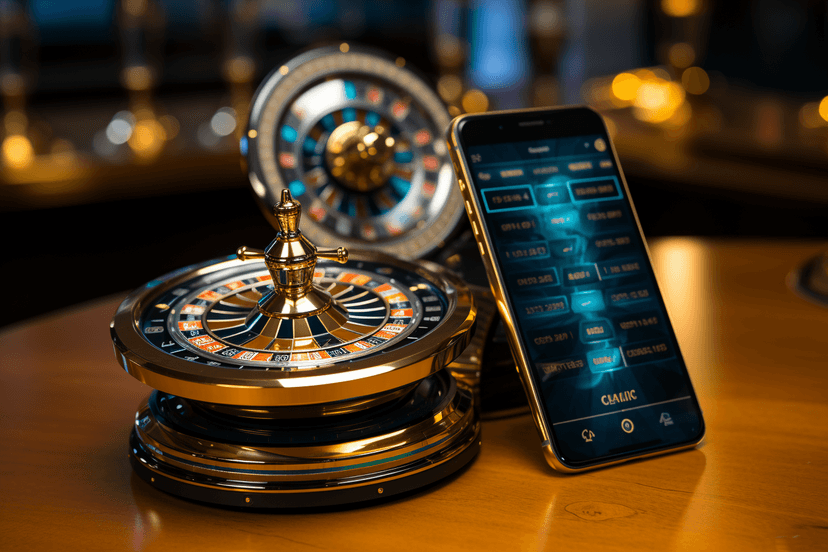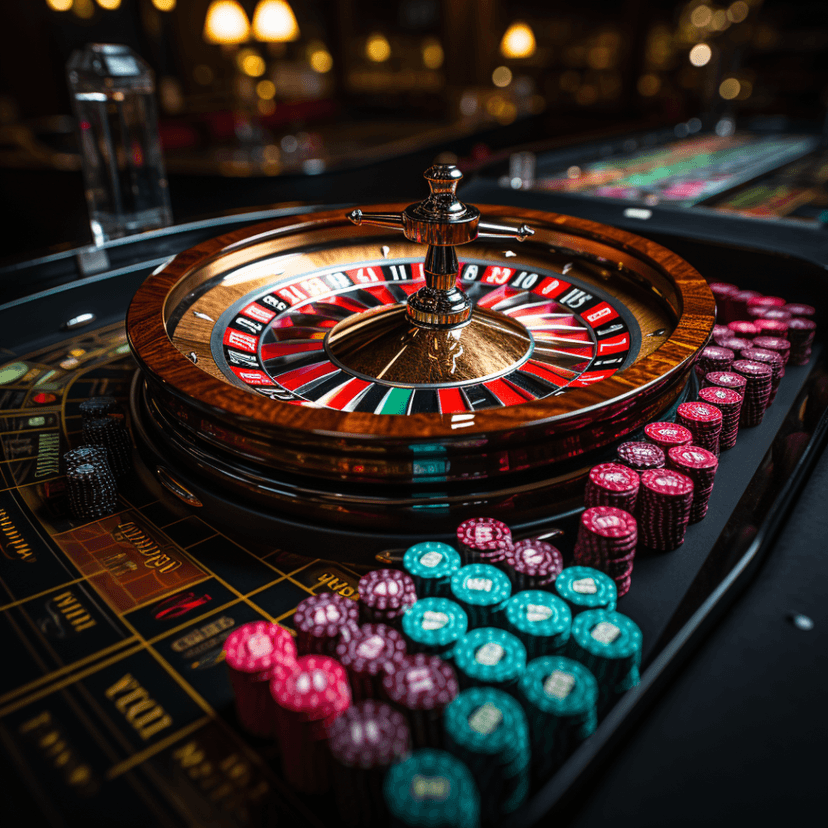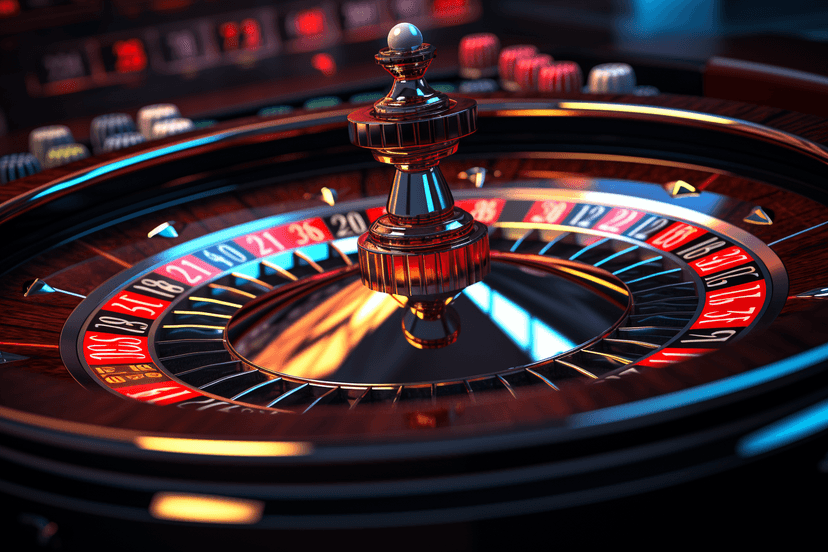What Are the Best Devices for Mobile Roulette?

Hunting for the best mobile casinos in Canada? MobileCasinoRank is your go-to guide for finding top-rated sites offering lightning-fast payouts, impressive bonuses, and seriously secure gameplay. Forget endless searching – we've handpicked the cream of the crop, optimized for Canadian players like you. Compare exclusive welcome bonuses, explore massive game selections, and cash out your winnings quickly with Interac and other trusted payment options. Ready to experience the thrill of real money mobile gaming? Let MobileCasinoRank guide you to the perfect online casino experience – legally, safely, and with the biggest jackpots!
Mobile roulette stands apart from other casino games due to its unique blend of visual complexity, timing precision, and interactive elements. Unlike slot machines that primarily require simple tap gestures, roulette demands careful chip placement across a detailed betting layout, split-second decision making during live dealer sessions, and the ability to clearly distinguish between closely positioned betting zones.
The spinning wheel, bouncing ball physics, and intricate table graphics create a sensory experience that relies heavily on smooth animations and crisp visual detail. Players must quickly identify winning numbers, track betting patterns, and make rapid adjustments to their strategy—all while managing the psychological pressure of real-money wagering.
Why Device Performance Matters to Mobile Roulette
Roulette is more sensitive to device performance than other casino games because it combines live dealer timing, detailed graphics, touch precision and extended play. All amounts are in CAD unless otherwise stated.
- Timing sensitivity: Live roulette sessions have strict betting windows.
- Visual precision: Distinguishing between red/black, odd/even, and number groups requires clarity.
- Touch accuracy: Precise chip placement prevents costly betting errors.
- Continuous engagement: Extended sessions test device stability and thermal management.
Key Device Attributes
| Attribute | Impact on Roulette Experience |
|---|---|
| Display Quality | Table visibility and number recognition |
| Processing Power | Animation smoothness and response time |
| Battery Performance | Session length and consistent performance |
| Network Connectivity | Live dealer stability and bet registration |
The best devices for mobile roulette are those that enhance visibility, responsiveness, and stability during live or virtual roulette sessions.
How Screen Size & Display Quality Impact Your Roulette Game
Roulette tables pack 37 or 38 numbered positions plus dozens of bet zones for colours, odds/evens, columns, and special combinations. Crashing that complex layout onto a phone screen without sacrificing usability can be a real keener’s challenge.
Screen size directly influences chip placement accuracy. On smaller displays, zones blur together, leading to misplaced bets and frustration—especially if you’re juggling a Double-Double before your turn. Higher refresh rates (90Hz, 120Hz or above) keep the spinning wheel smooth, the ball physics natural, and the interface snappy. HDR support cranks up the contrast between red and black, helping you see your odds in a flash.
Touch sensitivity and display quality go hand in hand. Modern roulette apps let you stack chips, adjust bets with gestures, and shift strategies on the fly. Poor touch responsiveness or laggy screens can leave you staring at a rejected wager—or worse, missing your entire turn.
Phone vs. Tablet: A Real-World Comparison
| Feature | 6.1" Phone | 11" Tablet |
|---|---|---|
| Table Visibility | Zooming in required; smaller numbers, tighter zones | Full view; clear numbers and extra bet spots |
| Chip Placement Precision | Multiple taps often needed | Pinpoint accuracy, even on complex combo bets |
| Live Dealer Video vs. Table | Video can crowd the table view | Balanced split between live action and betting layout |
| Strategy Tracking | Simpler bets (red/black, odd/even) | Monitor multiple strategies simultaneously |
Moving from a phone to a tablet can feel like upgrading your Loonie to a toonie—suddenly you’ve got room to play smarter, not harder.
Why Processing Power Is a Game-Changer
Roulette apps—especially live dealer games—are graphics-intensive and time-sensitive. Without enough processing power, you’ll face lag during critical bet windows (typically 15–30 seconds), jarring frame drops, and even app crashes—definitely not the kind of heat you want during a hot streak.
Performance: Mid-Range vs High-End Devices
Mid-Range Devices with CPU Throttling:
- Game freezes for 3–5 seconds during peak betting periods
- Live video becomes choppy when multiple players join the table
- App crashes during extended sessions due to memory limitations
- Battery overheating triggers performance restrictions
High-Performance Devices with Modern Chipsets:
- Instantaneous response to all betting actions
- Smooth live video even during busy gaming periods
- Stable performance throughout multi-hour sessions
- Efficient thermal management prevents throttling
If you’re a true mobile roulette keener, a high-powered device can be the difference between clutch wins and missed opportunities.
Connectivity Stability: Your Silent Ally
If you enjoy browsing online casinos, you know that network connectivity can make or break your session. Mobile roulette relies on real-time data for bets, video streams, and game updates. Any hiccup means missed wagers, unclear outcomes, or disconnections mid-spin—no one wants that during a tunnel commute, eh? Unlike downloaded casino games, mobile roulette constantly communicates with remote servers to process bets, stream live dealer roulette and update game states.
5G networks deliver ultra-low latency, while Wi-Fi 6 holds up better in crowded spots like coffee shops or your favourite Tim Hortons. Advanced signal tech cuts down on drop-outs as you switch towers or hop between Wi-Fi and mobile data.
Commuting vs. Home Play
Playing During Your Commute
- Frequent handoffs between cell towers
- Signal drops in tunnels or rural areas
- Potential data caps or throttling
- Higher risk of session interruption
Playing at Home on Stable Wi-Fi
- Consistent low-latency connection
- Reliable bandwidth for high-quality live dealer streams
- Minimal drop-out risk
- Ideal for marathon sessions without overheating
Touch Sensitivity & Haptics: The Finer Details
Roulette’s tiny bet zones demand precise taps, drags, and multi-touch gestures. If your screen misreads, you might bet on the wrong number—or your palm might trigger an accidental chip stack. Haptic feedback adds that satisfying click when chips land where you want them, helping you confirm bets without constantly watching the screen.
Key touch attributes:
- Response latency: Time between touch and on-screen feedback
- Pressure sensitivity: Filtering out accidental brushes
- Multi-touch accuracy: Handling simultaneous actions
- Edge detection: Recognizing touches near screen borders
Modern haptics can distinguish between light taps for chip placement, stronger pulses for bet confirmation, and unique patterns for wins.
Battery Performance & Extended Play
Long mobile roulette sessions push your device’s battery hard—constant screen brightness, network streaming, graphics processing, and audio output all add up. Auto-roulette or rapid-fire rounds accelerate drain even more.
As your device heats up, battery efficiency dips and processors throttle to keep things cool—leading to choppy gameplay. Power-efficient chipsets maintain steady performance and screen responsiveness, letting you chase streaks longer.
Battery optimisation tips:
- Reduce screen brightness to a comfortable minimum
- Close background apps to free processing resources
- Use Wi-Fi instead of cellular when possible to conserve power
- Enable power-saving modes cautiously—some disable visual or network features that impact gameplay
Finding Your Perfect Mobile Companion
Choosing the right device for mobile roulette depends on your play style, environment, and technical needs. Whether you’re spinning tables at home on stable Wi-Fi or placing quick bets on the go, aligning device performance with your strategy turns casual spins into an optimised, engaging experience.
Availability of online casinos and specific roulette games may vary by province (e.g., Ontario, British Columbia). Always check your provincial regulator (AGCO in Ontario, etc.) before you play. Min. Age: 19 in most provinces (18 in some).
Top Payment Methods: Credit/debit cards; Interac; Instadebit; PayPal
Know When to Take a Break. For help, call 1-866-531-2600 or visit the Centre for Problem Gambling.
FAQ
Why does screen quality matter when playing mobile roulette in Canada?
A sharp, clear display is key for spotting the difference between those closely packed numbers and betting options like red/black or odd/even. A blurry screen on your phone could lead to accidental bets on the wrong number, which nobody wants! High refresh rates (like 90Hz or 120Hz) also make the spinning wheel look smoother, especially during live dealer games, helping you keep track of the action.
How does my phone's processing power affect my mobile roulette game?
Roulette apps, especially live dealer versions, need some serious processing power to run smoothly. If your phone's processor is slow or gets bogged down, you might miss out on placing your bets in time (usually you get around 15-30 seconds per spin). You could also experience choppy animations or even app crashes. A decent processor means your bets get registered instantly, the video is smooth, and the app won't overheat after a few hours.
Why do I need a solid internet connection to play mobile roulette?
Online roulette uses your internet to handle bets, stream video from live dealers, and update the game. Even a tiny drop in your connection can mean your bet doesn't go through, or you miss seeing where the ball lands, or you get cut off from the live dealer. Staying on a strong Wi-Fi network – especially if you're using Wi-Fi 6 – or a good 5G connection cuts down on lag and lowers the chance of getting disconnected when you're trying to win big.
How do touch sensitivity and haptic feedback make betting easier?
In roulette, the betting spots can be pretty small. Good touch recognition means when you tap a number or drag chips, they go exactly where you want them to. If the touchscreen isn't responsive, you might have to try several times, and that can make you miss the betting window. Haptic feedback, that little vibration you feel when chips are placed, confirms your bet, so you don't have to keep staring at the screen to make sure it worked.
How does battery life affect how long I can play mobile roulette?
Playing roulette on your phone for a long time can really drain the battery. The screen is bright, the internet is always on, and the graphics are constantly running, all of which use up power. As your phone gets warmer, it might slow down to prevent overheating, which leads to lag and dropped frames. To keep playing longer, dim the screen, close other apps, use Wi-Fi instead of your data plan if you can, and avoid power-saving modes that turn off important graphic features.
Can I play real roulette on my phone for real money in Canada?
Absolutely! Many online casinos in Canada offer real-money roulette apps or mobile-optimized websites. Just make sure you're playing with a licensed and regulated operator to ensure fair play and secure transactions. Look for licensing information from provincial regulators like the Alcohol and Gaming Commission of Ontario (AGCO) or similar bodies in other provinces.
Can you actually win real money playing roulette on an app in Canada?
Yes, you can definitely win real money playing roulette on a casino app! Like any form of gambling, there's an element of risk involved, but it's possible to win if luck is on your side. Choose a reputable online casino, understand the different betting strategies, and always gamble responsibly.
Is playing online roulette trustworthy in Canada?
Whether or not you can trust online roulette depends on where you're playing. Stick to online casinos that are licensed and regulated by Canadian provincial authorities. These casinos are regularly audited to ensure fair play and use Random Number Generators (RNGs) to determine the outcome of each spin. This guarantees that the game is truly random and unbiased.
Is roulette entirely based on luck, or are there strategies involved?
Roulette is primarily a game of chance, meaning luck plays a significant role. However, players often employ different betting strategies, such as the Martingale or Fibonacci systems, to manage their bets and potentially increase their chances of winning. While these strategies can be interesting to try, remember that no strategy can guarantee a win in roulette, and the house always has an edge.
What are some popular roulette variations available at Canadian online casinos?
Besides the classic European and American roulette, you'll find some exciting variations at Canadian online casinos. These include French Roulette (which often has a lower house edge), Multi-Wheel Roulette (where you bet on multiple wheels simultaneously), and Live Dealer Roulette (which offers an immersive casino experience with a real dealer).







